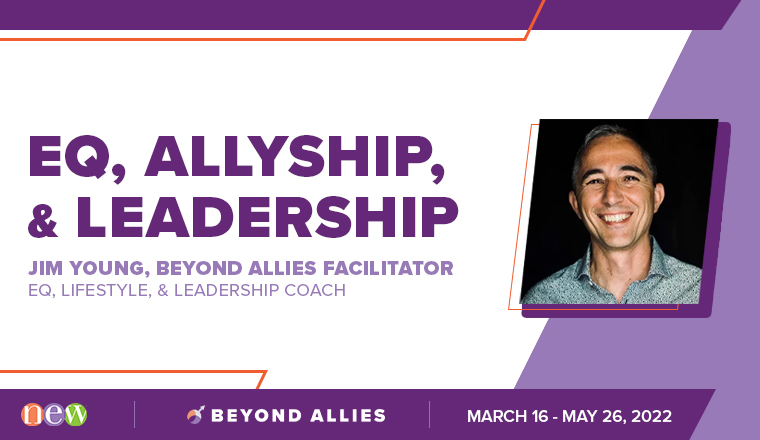EQ, Allyship, And Leadership
There have been countless articles and books written over the past three decades that cover why emotional intelligence (or “EQ”) is a critical skill for leaders. In short, leaders with high EQ have proven to be more successful in working with other people to appropriately influence positive business outcomes.
More recently, awareness has grown in corporate settings about the equally important role that male allyship plays in building strong, healthy, equitable businesses. As studies have consistently shown over the years, companies with more women in leadership roles perform better financially, as well as in social responsibility, safety, customer success, and overall corporate well-being.
So how do we bring these two essential leadership capabilities together and leverage EQ in service of male allyship, so we can create well-balanced leadership cultures that bring about greater success?
Strategies for allyship
In a recent blog post, NEW offered guidance on ‘20 Ways To Be An Ally‘, a list that provides allies with a robust set of strategies to use in service of supporting women in the workplace. Let’s connect the dots between a few of those strategies and the ways that EQ can unlock our ability to use them.
Allyship Strategy #1: Be a proactive and enduring supporter, by allowing others to “go first” and being supportive of those who might be struggling professionally.
- EQ Skill: One of the best skills to work on for this strategy is the Interpersonal Relationships skill, which is all about maintaining mutually satisfying relationships that are grounded in compassion and trust.
- EQ In Action Tip: Take the time to get to know your colleagues as people.
- EQ In Action Example: When interacting with a coworker through their title or role, we can forget that we’re dealing with a person. For example, I might be frustrated with the Controller for asking to table an issue so she can do more research. But when I consider her as Maria, who understands the importance of the work and wants to leave early today so she can watch her daughter’s taekwondo class, I’m far more likely to show support.
Allyship Strategy #4: Speak up when you see bias at play.
- EQ Skill: This is a great time to leverage your Assertiveness skill by communicating your stance to defend personal rights in a clear, constructive, socially acceptable manner.
- EQ In Action Tip: Don’t be silent when you notice something doesn’t feel right.
- EQ In Action Example: Imagine that you see someone repeatedly interrupting a female colleague, who is growing increasingly upset because she is not being allowed to finish her comments. An assertive ally might say something like, “Excuse me. I notice that Jess has tried to offer her thoughts on this a few times and hasn’t gotten a chance to finish what she’s saying. I’m really interested in her perspective. Can we give her the floor now?”
Allyship Strategy #10: Understand that trust is earned, and that women often have negative experiences of unequal treatment in their work histories.
- EQ Skill: Among the most powerful EQ skills is Empathy. By recognizing and appreciating how others feel, including being able to articulate that we understand their perspective, we open doorways to conversations that build trust.
- EQ In Action Tip: Refrain from any urge you might have to fix someone’s challenging situation. Focus instead on understanding and acknowledging how they feel.
- EQ In Action Example: Let’s say your associate Tania comes to you on the verge of tears because she is upset that a client said something rude to her. Instead of troubleshooting how to deal with the client, take some time to imagine what Tania’s experience is like. Perhaps you reflect back to her something like, “Wow, that must be so upsetting” or “Oh, that’s awful. How are you doing?” Of course you can also be an ally by helping Tania with the problem, but give her the choice instead of taking over the situation. You can do that by following up your affirmation with a question like, “How can I best help you?”
Allyship moments invariably involve an emotional exchange of some type – whether stressful or comforting, prideful or frustrating, or something else based on how the situation unfolds. Because of this, there are natural links between building emotional intelligence and enhancing our allyship abilities.
Though each of these areas of development can be challenging, the good news is that both are skill sets that you can build. By working on both, as in the examples above, you just might find that they each become a little bit easier.
If you’re interested in becoming a better ally, there’s never been a better time! Registration for Beyond Allies is open until Feb. 18 – learn more!



